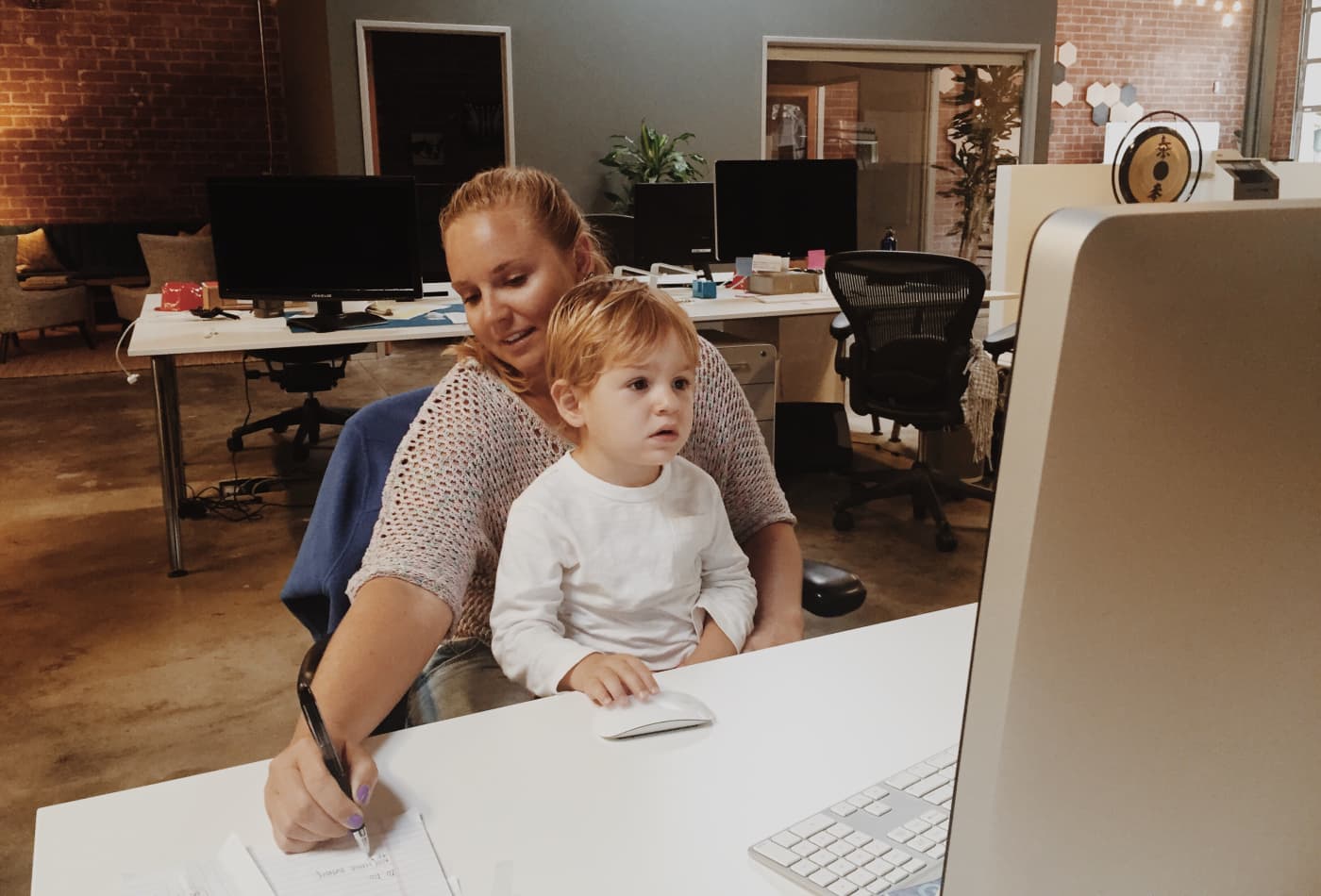Why long-term flexible work options could be a game changer for women

Balancing the demands of office life and home life can be overwhelming for any working parent.
But with women spending a disproportionate amount of time handling housework and childcare responsibilities, data from Pew Research Center shows that women are more likely than men to adjust their careers for family.
As the coronavirus pandemic continues to force millions of employees to work from home, experts predict these flexible work options could be here to stay. And according to Elise Gould, senior economist at the Economic Policy Institute, these policies could have a positive benefit on working women, allowing them to “make a schedule around the other responsibilities they have.”
CNBC Make It spoke with Gould, along with several other experts, to discuss how long-term flexible work options could be a game changer for women at work and at home.

The opportunity for uninterrupted careers
More than 75% of all caregivers are female, meaning that in addition to juggling the demands of work, a large portion of women are also juggling the demands of caring for a loved one. This unpaid labor that women do outside of the workforce often results in a career break that has both short-term and long-term effects.
In fact, roughly 31% of women who took a career break after having kids said they didn’t want to but had to because of a lack of workplace flexibility, according to a 2019 FlexJobs survey of more than 2,000 women with children under 18.
Of those same women, 70% said it was difficult for them to re-enter the workforce after taking time off. When calculating lost wages, future wage growth and lost retirement and social security contributions, a woman who takes a three-year break on a $50,000 salary could lose more than $500,000 over the course of her career, according to a MarketWatch study.
“The worst choice that you can force somebody to make is to pick between their family and their career,” bestselling author and futurist Jacob Morgan says. “I think that’s terrible.”
Morgan, who is the host of “The Future of Work” podcast, says he believes this work-from-home time period will prove that employees can still be productive when you allow them to work outside the office. He argues that any “forward-thinking organization” will implement long-term flexible work programs after the pandemic, allowing parents, especially women, to work schedules that accommodate both their personal and professional demands.
“Any leader who practices empathy will say, ‘Look, you can have both,’” Morgan says. “You don’t need to sacrifice one for the other.”

A more equitable division of at-home labor
Long-term flexible work options won’t just benefit women at work — it may also be a plus for women at home.
“I think you’re going to see more men starting to want these [flexible options] too, assuming they enjoyed the time at home with their kids,” says career coach Julie Kratz, while emphasizing that this can lead to a more equitable division of housework and child-care responsibilities.
In a recently released report titled, “The Impact of COVID-19 on Gender Equality,” economists from Northwestern University, the University of California San Diego and the University of Mannheim explain how the pandemic has already put “millions of men on a form of forced paternity leave,” which could have a “sizable impact” on families in the future.
For example, with women holding 76% of all health-care jobs in the U.S., and 85% of nursing roles specifically, the economists point out how today’s crisis has made many working dads primary childcare providers for the time being.
Though this shift may be temporary for some families, the economists write that if more dads are given the flexibility to work-from-home in the future, then we could see a “substantial increase in men’s future participation in child care.”
But, even with some dads helping out at home, not all working moms are breathing a sigh of relief. Already, 14% of women say they’ve considered quitting their job during the coronavirus pandemic because of the overwhelming pressure to be an employee, teacher and parent all at once, according to a recent survey of nearly 1,500 employees from HR analytics company Syndio.
While flexible work arrangements won’t solve all of our gender equality issues, Kratz points out that we have seen its impact in other countries. Reports show that roughly 75% of all European employees have access to some work-schedule flexibility, with 90% of employees in the Netherlands and Nordic countries having access to this benefit. As a result, research from the Organisation for Economic Co-operation and Development says Nordic countries have “high levels of female employment without a large gender gap in average weekly working hours.”
Kratz, who works with many clients that already have flexible work arrangements, emphasizes that these flexible policies won’t just benefit women, but they will also benefit employers who are looking to recruit and retain the best talent.
“Productivity rises as well [when working remotely],” she adds. “So this isn’t just a nice thing to have, but it’s actually a really great thing for the economy.”
